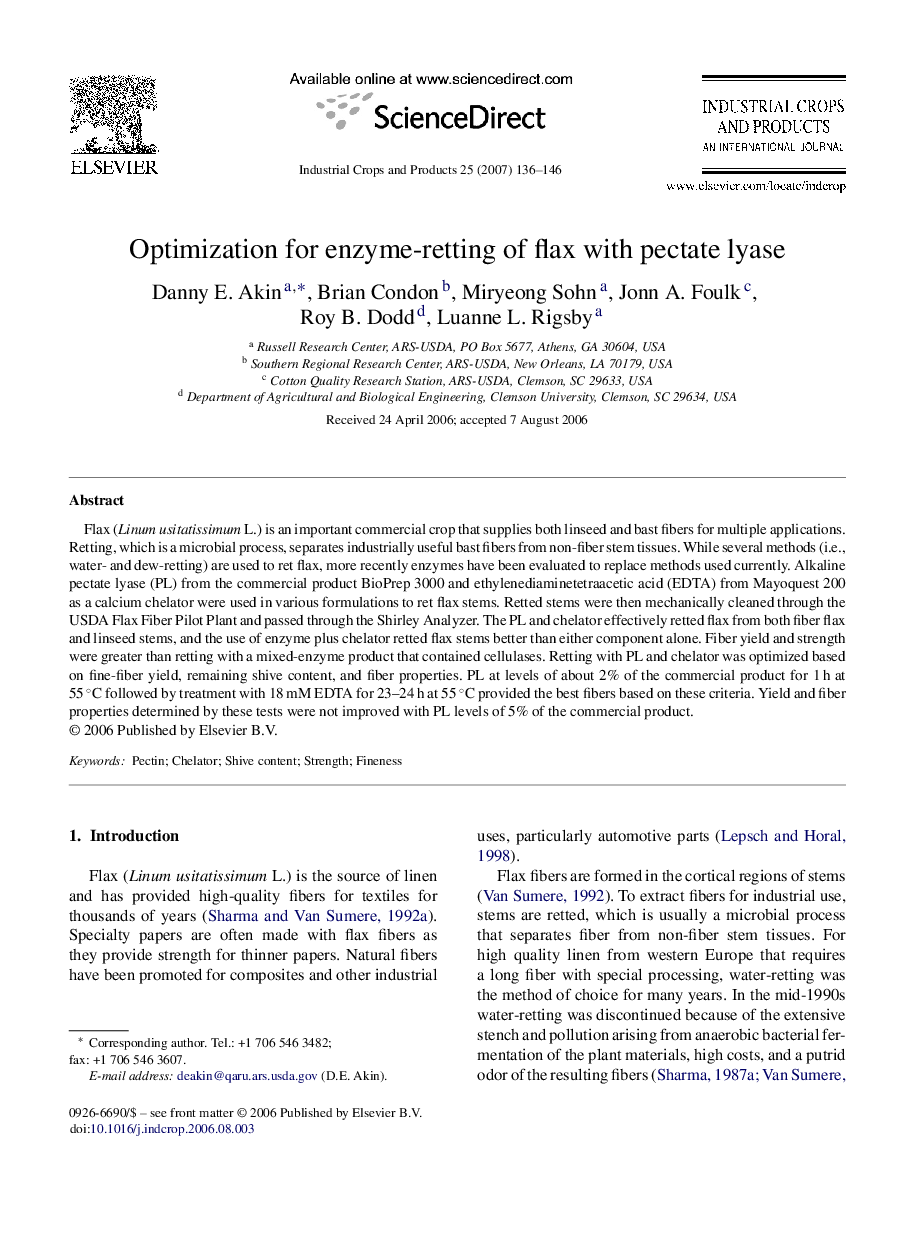| کد مقاله | کد نشریه | سال انتشار | مقاله انگلیسی | نسخه تمام متن |
|---|---|---|---|---|
| 4515400 | 1322245 | 2007 | 11 صفحه PDF | دانلود رایگان |

Flax (Linum usitatissimum L.) is an important commercial crop that supplies both linseed and bast fibers for multiple applications. Retting, which is a microbial process, separates industrially useful bast fibers from non-fiber stem tissues. While several methods (i.e., water- and dew-retting) are used to ret flax, more recently enzymes have been evaluated to replace methods used currently. Alkaline pectate lyase (PL) from the commercial product BioPrep 3000 and ethylenediaminetetraacetic acid (EDTA) from Mayoquest 200 as a calcium chelator were used in various formulations to ret flax stems. Retted stems were then mechanically cleaned through the USDA Flax Fiber Pilot Plant and passed through the Shirley Analyzer. The PL and chelator effectively retted flax from both fiber flax and linseed stems, and the use of enzyme plus chelator retted flax stems better than either component alone. Fiber yield and strength were greater than retting with a mixed-enzyme product that contained cellulases. Retting with PL and chelator was optimized based on fine-fiber yield, remaining shive content, and fiber properties. PL at levels of about 2% of the commercial product for 1 h at 55 °C followed by treatment with 18 mM EDTA for 23–24 h at 55 °C provided the best fibers based on these criteria. Yield and fiber properties determined by these tests were not improved with PL levels of 5% of the commercial product.
Journal: Industrial Crops and Products - Volume 25, Issue 2, February 2007, Pages 136–146